OFDM Experiment on Lake Washington
Signal Design
Zero-padded orthoganal frequency division multiplexing (ZP-OFDM) signals were generated offline using MATLAB. ZP-OFDM is described in the paper Pilot-tone based ZP-OFDM Demodulation for an Underwater Acoustic Channel. We generated seven different types of OFDM symbols with different combinations of guard intervals and numbers of subcarriers. The subcarrier modulation format in all symbols was QPSK, and the data was encoded with Reed-Soloman encoding. Signals were transmitted in frames that consisted of a 100ms FM Chirp signal followed by the OFDM data symbols. Each frame was made to be approximately 2s long. The FM Chirp signal was used at the receiver for timing synchronization. The table below shows the guard interval, number of subcarriers, and data rates for the 7 symbols. The figure shows a frame for the 6th symbol listed in the table. Note that the FM Chirp is not included in the computation of the data rates.
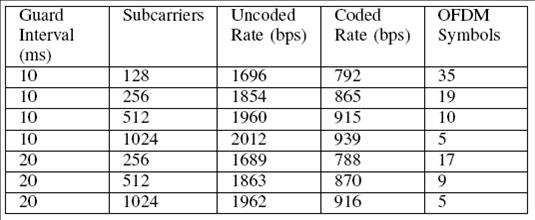
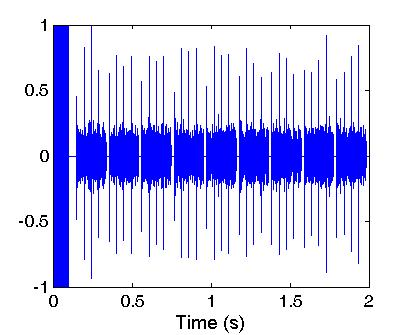
Experimental Setup
The experiment was conducted on Lake Washington in January 2008 and was performed with the assistance of the UW Applied Physics Lab. Signals were transmitted by a single hydrophone from the RV Miller and received by a 4 element array at the RV Henderson at ranges of 250m, 500m, 1km, 2km, and 4km. The transmitter array was lowerd to 1/3 of the water column depth (20m), and the source array was centered at 30m depth with array spacing of 8m.
Channel Conditions
The figure below shows the source location throughout the experiment and the receiver location at ranges of 2km and 4km. Lake Washington has a muddy bottom, which means that it will absorb signal energy and reduce the amount of multipath arrivals. On the day of the experiment that was very little wind speed, and thus low surface agitation. The first figure below shows the source location (which was constant throughout the experiment), and the receiver location for the 2km and 4km ranges. The second figure gives the measured Sound Speed Profile.

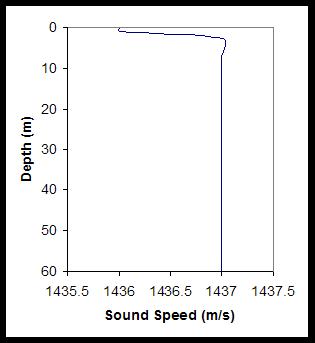
Results
The figures below show the output at distances of 250, 2000, and 4000 meters for the cases of 128 and 1024 subcarriers with 10ms guard interval. For each distance, we also plot the channel impulse response from the data, as well as the channel impulse response from Bellhop. Bellhop is a publicly available Gaussian ray tracing program available here. The input files that we used for the Bellhop simulation are the environmental file and the bottom reflection coefficient file.
In the figures below, the raw (prior to decoding) output of the 128 subcarrier transmission is given on the left, and the raw output of the 1024 subcarrier transmission is given on the right. The channel impulse response from data is given on the left and that of Bellhop is given on the right.
At 250 meters, the channel impulse response shows that there are significant impulses beyond 10 ms, which will cause interference between OFDM blocks. This is evident in the output signal constellation. It is evident from this constellation that there are errors before decoding; however after decoding there were no errors
At 2000 meters, we can see that all of the channel impulses are contained within the first 10 ms. Therefore, the results at this range are very good with no errors before or after coding for either 128 or 1024 subcarriers.
At 4000 meters, we can see from the extended impulse response, which was taken from data, that there was a very late and very large impulse at about 1.8 seconds. We believe that this impulse originated from somewhere along the bank of Lake Washington. This late impulse causes errors in the data received after 1.7 seconds. However, if we look at the data received before this late impulse, there are no errors in either before or after coding.
250 Meters
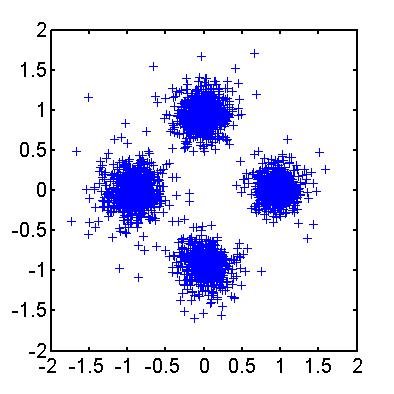
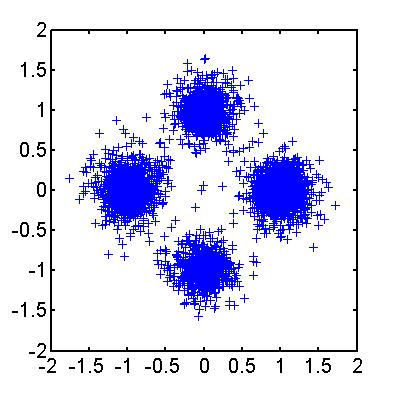
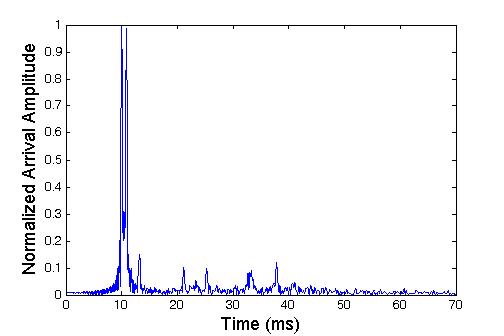
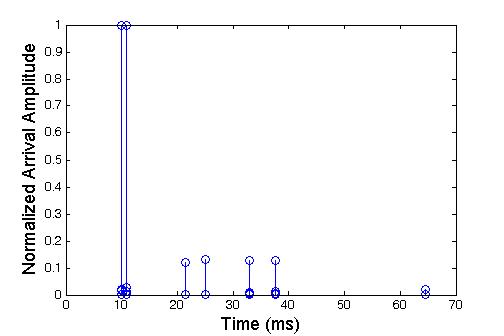
2000 Meters
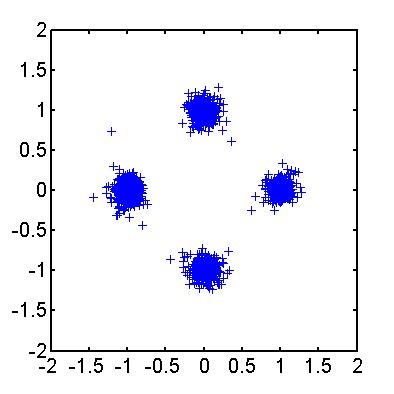
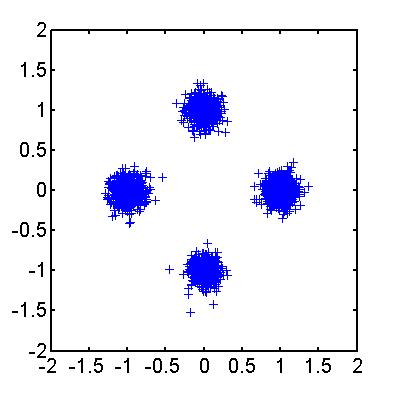
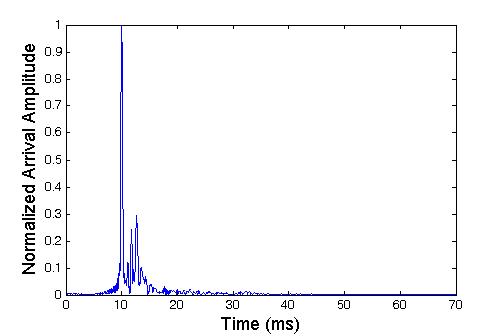
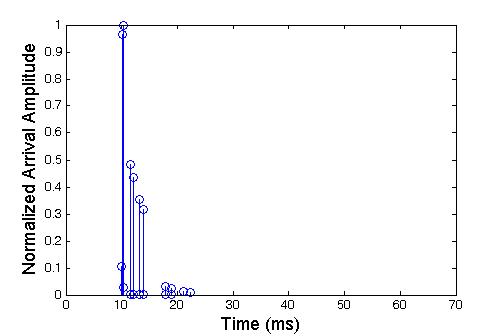
4000 Meters
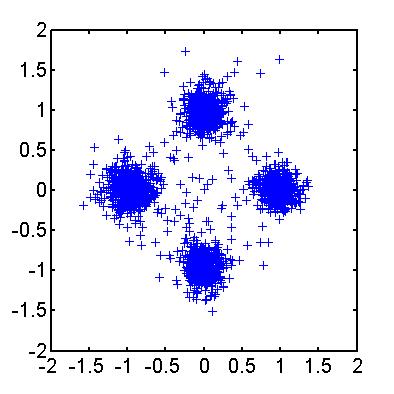
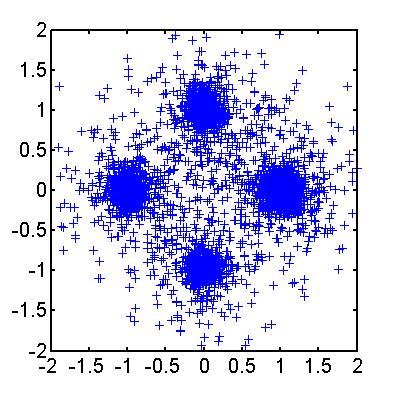
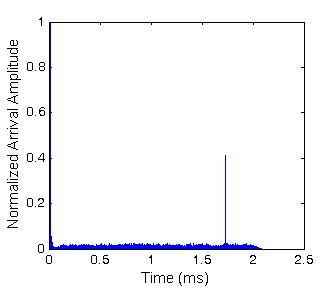
4000 Meters (Symbols before late impulse)
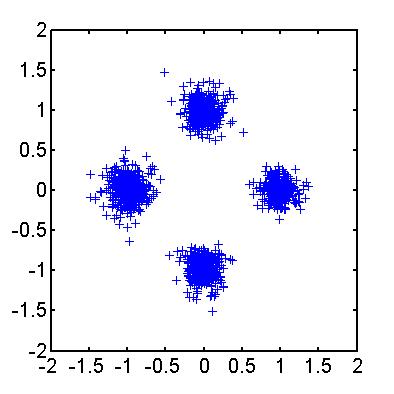
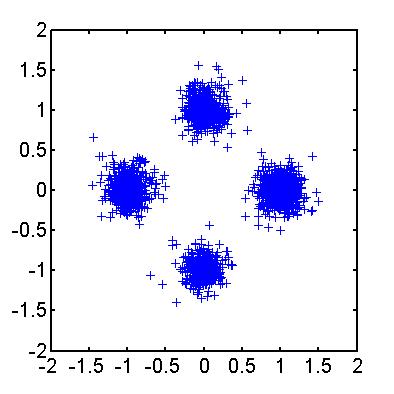
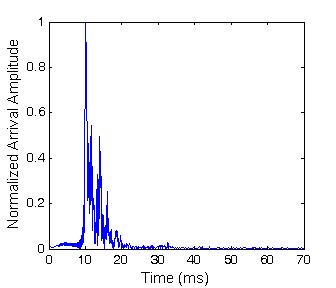
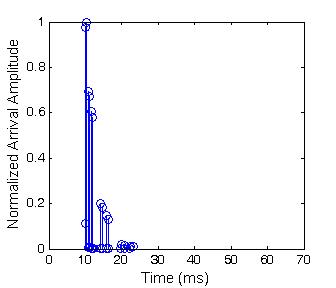
Future Work
We have created a simulation environment utilizing the channel impulse response from Bellhop along with a model that introduces Rayleigh fading with a Doppler spread based upon the wind driven surface waves. This allows us to simulate the performance of any signal constellation through any under channel that we wish to look at. Although we have shown that good performance was achieved in this experiment, we believe that the conditions of this experiment were somewhat ideal for acoustic OFDM transmission. The muddy bottom of Lake Washington effectively mitigated multipath (evidenced by the low delay spreads observed at 2000 m and 4000 m). Additionally, the day of this experiment was extremely calm with no wind. Therefore, there was minimum Doppler spread.
The underwater acoustic channel, particularly in littoral areas and surf zones, can exhibit significant Doppler and time spreading. We are currently simulating the performance of OFDM in a wide variety of underwater channels. Our results so far show a need to redesign current receive algorithms in order to mitigate the distortion caused by time and frequency spreading.